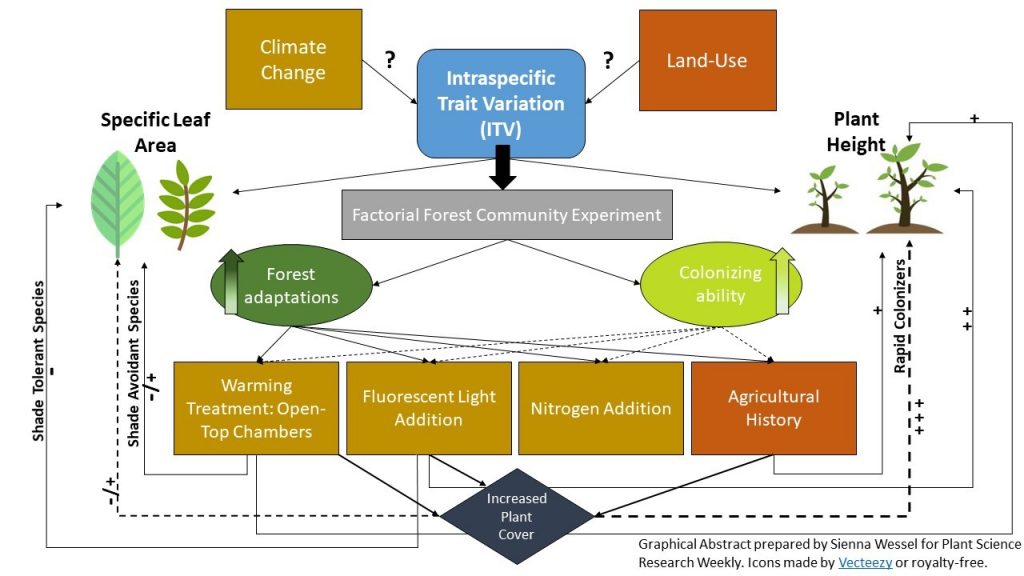
Individualistic responses of forest herb traits to environmental change ($) (Plant Biol)
Plant Science Research WeeklyFunctional traits have shown promise for their ability to improve predictions of interspecific plant responses to environmental factors, but most trait-based studies have not addressed the role of intraspecific trait variation (ITV) in trait-environment relationships. ITV may be directly or indirectly…
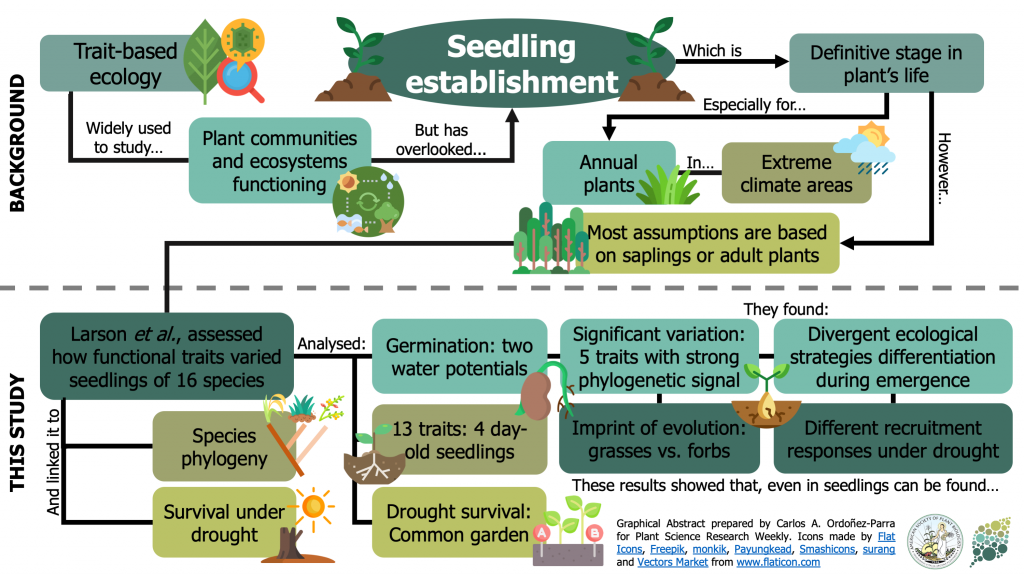
Ecological strategies begin at germination: Traits, plasticity, and survival in the first four days of plant life ($) (Funct. Ecol.)
Plant Science Research WeeklySeedling establishment is seldom addressed in trait-based ecology. Advocating for the importance of this stage of a plants' life, Larson et al. assessed how functional traits varied in newly emerged seedlings and how this was related to their phylogeny and survival under drought. The authors germinated…

Evidence for physiological seed dormancy cycling in the woody shrub Asterolasia buxifolia and its ecological significance in fire‐prone systems ($) (Plant Biol.)
Plant Science Research WeeklyPhysiologically dormant seeds shift between dormancy (i.e., unable to germinate), conditional dormancy (i.e., germination restricted to a narrow set of conditions), and non-dormancy (i.e., germination under a wide range of conditions) in response to environmental changes. This mechanism –known as dormancy…

Review: How mycorrhizal associations drive plant population and community biology ($) (Science)
Plant Science Research WeeklyGreat strides have been made in discovering the molecular players that allow plants and mycorrhizal fungi to establish their symbiosis. Here, Tedersoo et al. look beyond the single plant and address how these associations affect plant communities. Notably, they review the functions of the four evolutionarily…
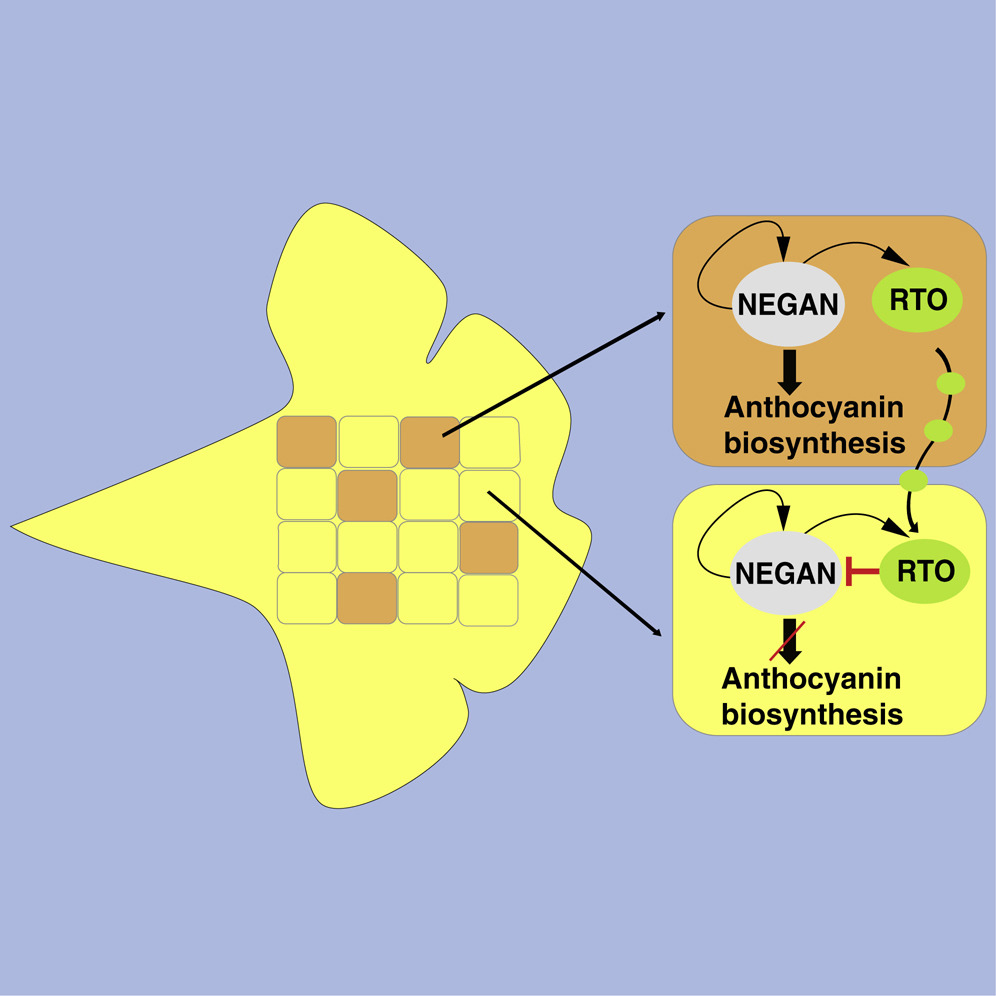
Two MYB proteins in a self-organizing activator-inhibitor system produce spotted pigmentation patterns (Curr. Biol.)
Plant Science Research WeeklyThe questions of how patterns are formed is one of the oldest in biology, and even considered by the famous mathematician Alan Turing, who proposed that reaction-diffusion (RD) models underly de novo pattern formation. Briefly, a reaction that takes place in one place sends a signal that leads to a different…

Community diversity outweighs effect of warming on plant colonization ($) (Global Change Biol.)
Plant Science Research WeeklySeveral studies have addressed growing concerns regarding increases in exotic plant colonization of communities in response to a warming climate. However, both abiotic (e.g., warming climate) and biotic (e.g., changes in community diversity) shifts can be simultaneous results of warming and both can…
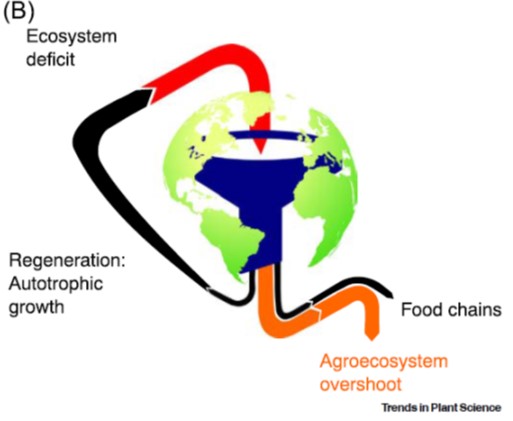
Review. Flowering plants in the Anthropocene: A political agenda (Trends Plant Sci)
Plant Science Research WeeklyFor the past 100 million years, flowering plants have been the main producers of land biomass. They also are indirectly responsible for the origin of agriculture, setting the ball rolling for the onset of the Anthropocene. Negrutiu et al. argue that the accompanying rapid global changes require a reconsideration…
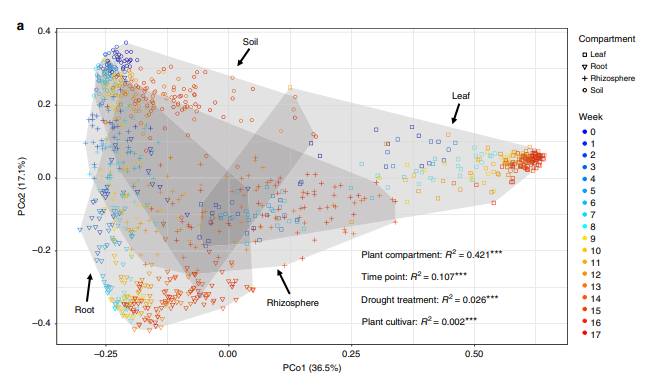
Fungal community assembly in drought-stressed sorghum shows stochasticity, selection, and universal ecological dynamics (Nature Comms)
Plant Science Research WeeklyPreviously, crop-associated mycobiomes were thought to assemble largely under the control of deterministic selection by the plant host with limited influence from drift. This study by Gao et al., highlights the important role of stochastic processes in fungal community assembly, particularly in the hosts’…

Opinion. A return to the wild: Root exudates and food security (Trends Plant Sci)
Plant Science Research WeeklyMy dog is a fantastic companion, but it’s obvious he could never fend for himself; domestication has eliminated his ancestral survival skills. Likewise, most crop plants thrive under human care, but have lost many of the traits that would help them survive in harsh conditions. Preece and Peñuelas…

